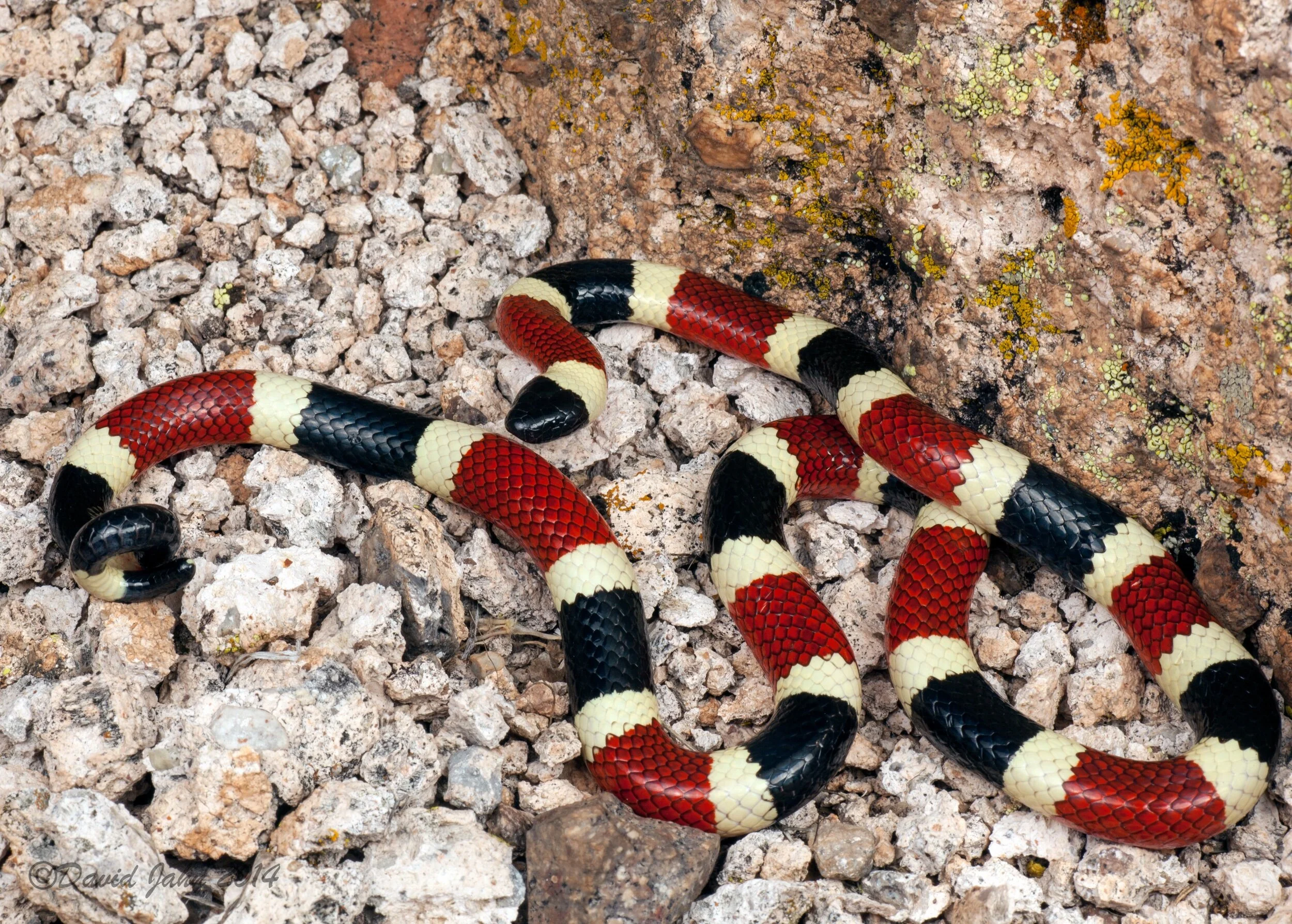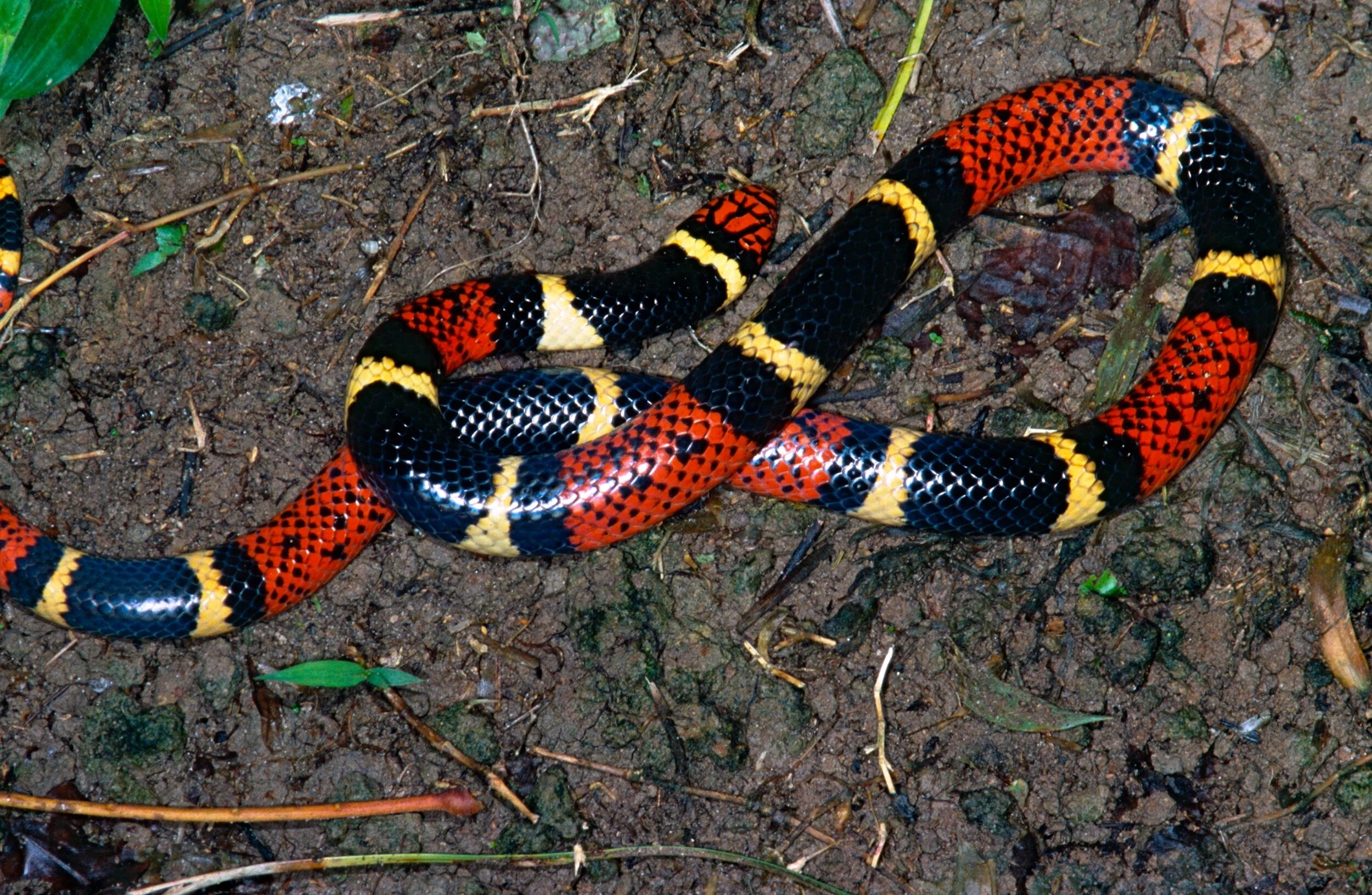Coral Snake
Coral snakes are a large group of elapid snakes that can be subdivided into two distinct groups, Old World coral snakes and New World coral snakes. There are 16 species of Old World coral snake in three genera (Calliophis, Hemibungarus, and Sinomicrurus), and over 65 recognized species of New World coral snakes in two genera (Micruroides and Micrurus). Genetic studies have found that the most basallineages are Asian, indicating that the group originated in the Old World.
Coral snakes in North America are most notable for their red, yellow/white, and black colored banding. However, several nonvenomous species have similar (though not identical) coloration, including the scarlet snake, genus Cemophora; some of the kingsnakes, and the milk snakes, genus Lampropeltis, whose banding however does not include any red touching any yellow; also, there is a genus of shovelnose snake, genus Chionactis, whose color banding actually matches that of a genuine coral snake. No genuine coral snakes in North America, however, exhibit red bands of color in contact with bands of black. So while on extremely rare occasions a certain non-venomous snake might be mistaken for a coral snake, the mnemonic holds true in that a red/ yellow/ black banded snake in North America whose red banding is in contact with its black banding is never a venomous coral snake.


